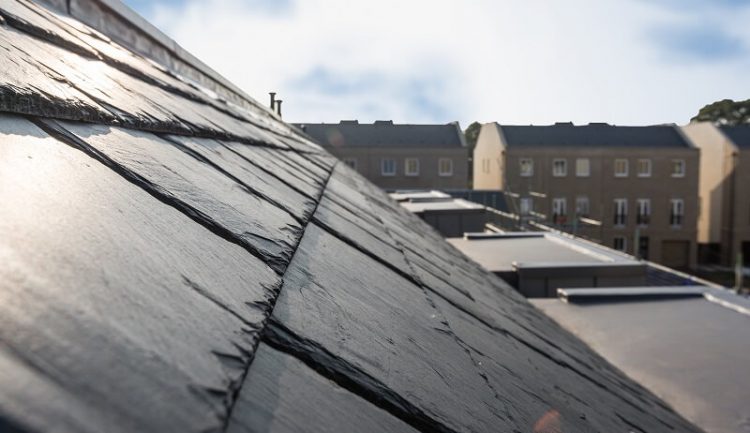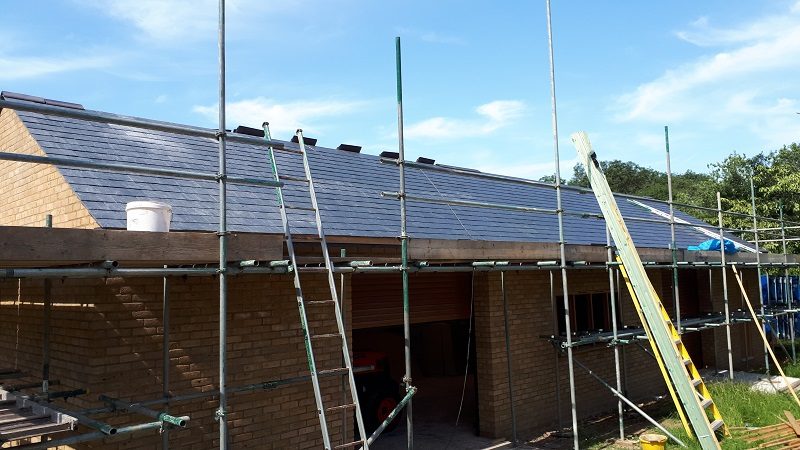Repair or Replace a Slate Tiled Roof - The Important Factors To Consider

Slate is a natural material with unmatched technical features that will last well over 100 years. In fact, it’s usually the fixings and the supporting timbers that deteriorate before the slate tiles themselves. But how do you know whether your roof needs a simple repair or re-slate?
Over time, the corrosion of nails or ‘nail sickness’ causes the slates to slip or split and battens or pegs often decay due to woodworm or rot. Other causes of slate roof deterioration include:
- the delamination of poor-quality slates where they split into layers
- mechanical damage, like wind-lift
- bad slating practice for example the use of thin nails that eventually cut through slates
- the decay of mortar ‘torching’ underneath slates.
Be informed
The best way to protect your roof is to know what you are dealing with. Then you can trust the roof repair or re-slate to a reputable roofer. It’s a skilled job, and along with CUPA Pizarras we support apprentices at local colleges to ensure there are roofers capable of performing this craft.
Whether you need to repair or re-slate a roof really depends on the extent of the deterioration. Regular inspections are essential to spot and tackle problems before they get worse and your repair cost escalates.
What should you be looking for
When looking for problems internally, water damage to ceilings will probably not be under the problem area on your roof.
Externally looking for broken, slipped or missing slates might be harder to do. But if possible you need to know whether they are all in one area or scattered across the entire roof. If the damage is all in one area, the problem might be with the anther aspect, a chimney flashing perhaps, rather than the roof.
Check loose slates for firmness. The best way is to hold a loose single slate at the edge and gently tap it in the centre with a hammer. It should produce a clear ringing sound if the slate is sound. If you hear a dull, dead, sound it’s likely that the slate has become porous and is past its usefulness.
As a guide if 20% of the original slates have been renewed, and repairs are scattered all over the roof, further repairs are considered to be no longer cost effective. Factors including the state of the gutters and ancillary items, like flashings need also to be considered.
If the decision is to repair …
Slipped, broken or missing slates need re-securing or replacing using copper wire or straps (‘tingles’) fixings. Where a patch of slates is re-fixed, (known as a partially renewed batten) they can be secured with nails instead of tingles.
It’s important to bear in mind, obvious repairs aren’t good from a resale point of view. When a building surveyor spots a repair using lead or copper clips, they may decide that the roof is reaching the end of it’s life and advise it should be recovered.
A good quality mastic applied in accordance with manufacturers instructions would help you avoid this whilst providing a repair lasting as long as the traditional methods.
Foam or bituminous-type remedial treatments are not recommended. They reduce ventilation causing the risk of timber decay. Furthermore, when it does become time to replace the roof make the slates reuseable.
Never reverse your old slates. However, the broken slates still have a value. Consider storing them for re-dressing and reuse elsewhere on the roof in future.
When you decide to replace…
A new roof of any kind is a serious investment. Always have discussions and make decisions over material replacement in conjunction with your local planning authority.
Slate from CUPA Pizarras comes with a declaration of performance and a barcoded traceability label that guarantees provenance and ensures quality. CUPA extract slate from no less than 16 quarries across the largest slate reserves in the world in Northern Spain. This enables them to offer the largest range of slate tiles on the market. In order to make sure your roof looks great you simply need an understanding of the slate you are replacing.
The Slate roofs that are a common sight on older properties in Scotland, Wales, Cornwall and Cumbria are often rustic in character. Rough textured slates becoming smaller towards the top of the roof - known as "diminishing courses" were the norm.
Smooth regular sized Welsh slate, installed in uniform courses on the Victorian housing in cities, resulted from the railways at the beginning of the 19th Century.
Advantages of buying your new slate from Burton Roofing Merchants
At BRM we use our extensive product knowledge to match the type, colour, texture and size of slates for your requirements.
We carry more slate stock than other merchants. We will be happy to help you find the right slate, for the age/location of any building. Why not bring one of your old slates along to find a match. Or contact one of our reps, who will discuss the options with you one site and provide samples.
When completely renewing a heritage slate roof it’s advisable to photograph the detailing of hips, valleys, ridges, dormers, eaves and abutments. Changing the details of a roof could require Listed Building Consent. The ventilation of true slate roofs must be increased sensitively, where required. Historic England provides useful advice in their 'I want to 'I want to renew my roof' article.
One final tip: Avoid breaking the old slates – they have a value. Remove nails with care. The slates have the potential to be re-used. It's possible to mix new slates with old ones across the roof, but more frequently set them aside for use a smaller slope.
If you need any further advice on the repair or re-slate of your roof get in touch with our experienced staff either at your local branch or via our livechat.

